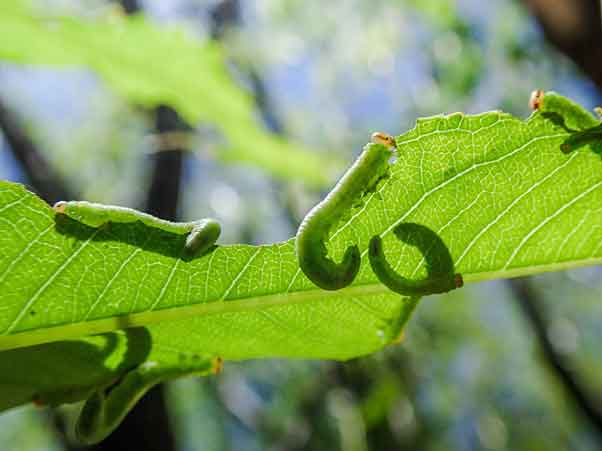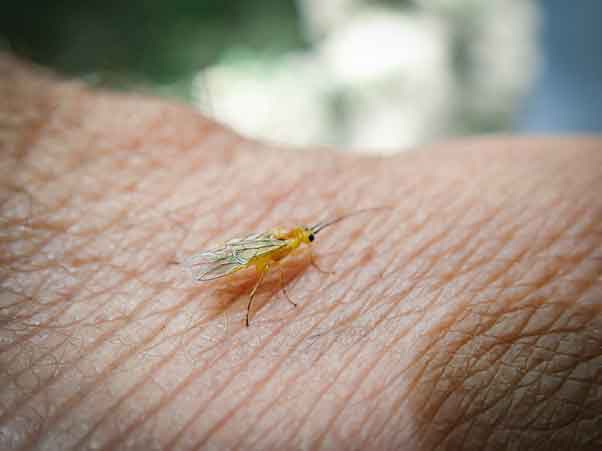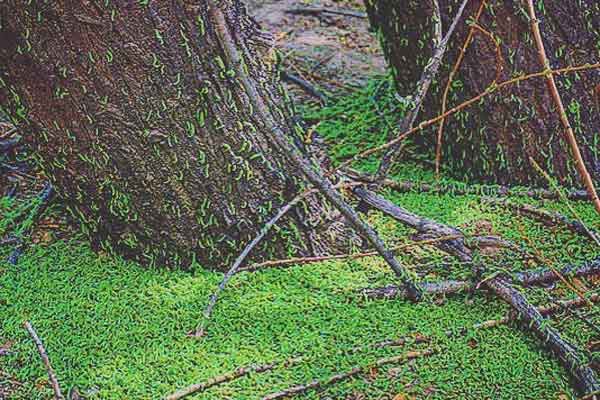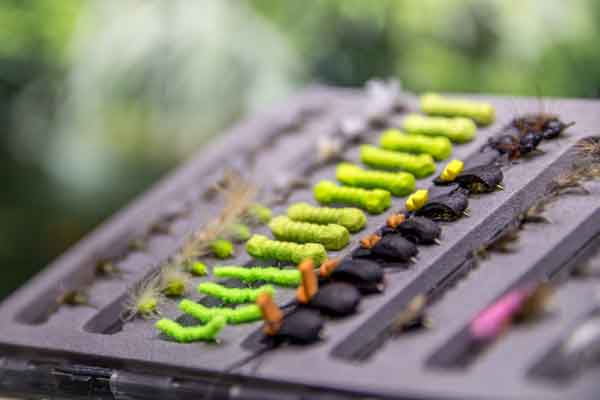In the middle of the summer, when the temperature is warmest and the hatches are starting to slow down, a very special event takes place: the annual willow worm hatch. During this hatch, trout gorge themselves on the protein-rich worms, presenting anglers with the exciting opportunity to sight-fish to trout feeding very actively on the surface. The fishing can be so unbelievably good that many of our guests schedule their trips around the hatch.

The willow worm is actually the larva of a very small wasp called a sawfly (Nematus desantisi). The sawfly inserts its fertilized eggs inside the leaves of the willow trees lining the rivers. When the eggs hatch, the larvae begin to feed on the leaves and grow in size. Eventually, the larvae become full-grown willow worms. The worms then build cocoons, from which they emerge as sawflies. In perfect conditions, this bug can go through several life cycles over the course of a summer. Thousands of worms will cover a single tree and consume all of its leaves.


The fly patterns to imitate Gusanito (a little worm, which is under three quarters of an inch in length) are pretty basic, mainly using light green (apple green) foam or chenille, with slight variations in the green tones. We also match the size of the fly to the most predominant size of worm we see while fishing.





